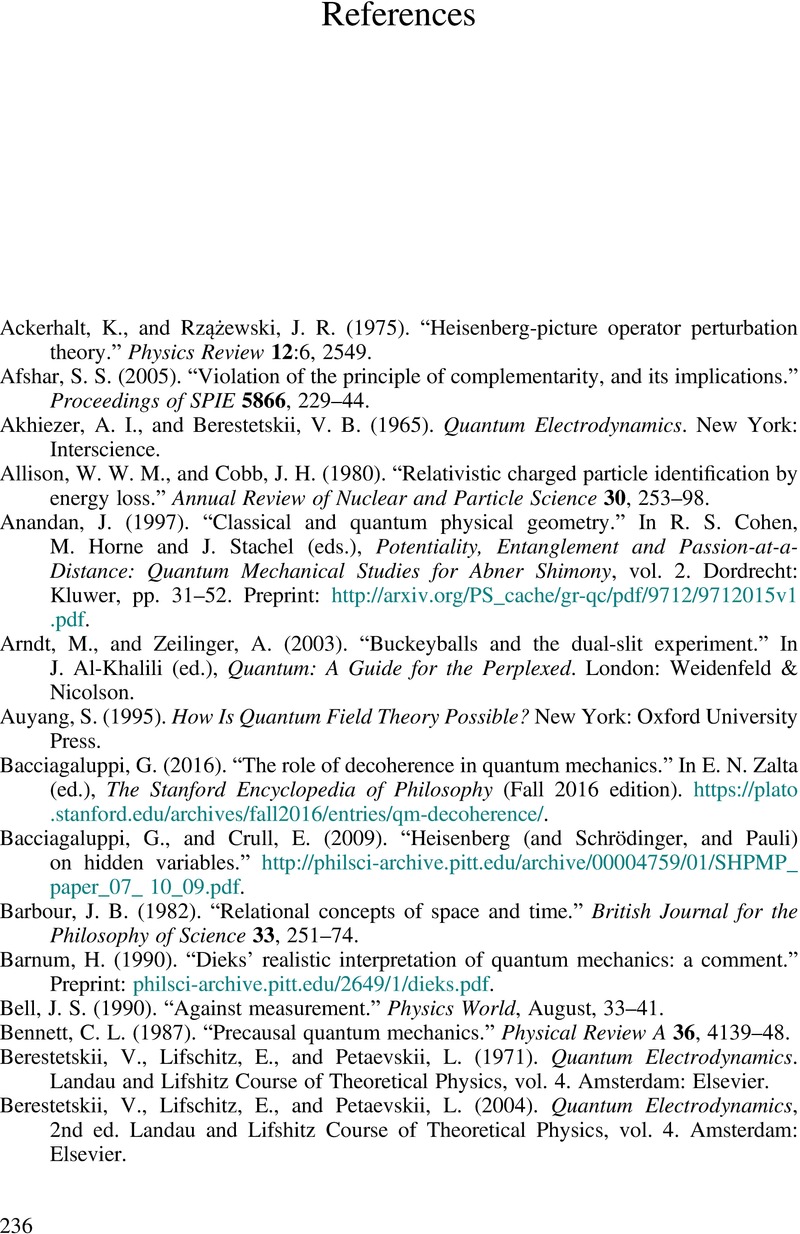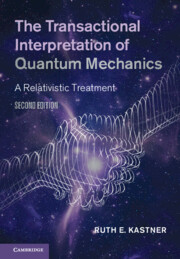Book contents
- The Transactional Interpretation of Quantum Mechanics
- The Transactional Interpretation of Quantum Mechanics
- Copyright page
- Contents
- Preface
- 1 Introduction
- 2 The Map versus the Territory
- 3 The Original TI
- 4 The New TI
- 5 The Relativistic Transactional Interpretation
- 6 Challenges, Replies, and Applications
- 7 The Metaphysics of Possibility in RTI
- 8 RTI and Spacetime
- 9 Epilogue
- References
- Index
- References
References
Published online by Cambridge University Press: 22 April 2022
- The Transactional Interpretation of Quantum Mechanics
- The Transactional Interpretation of Quantum Mechanics
- Copyright page
- Contents
- Preface
- 1 Introduction
- 2 The Map versus the Territory
- 3 The Original TI
- 4 The New TI
- 5 The Relativistic Transactional Interpretation
- 6 Challenges, Replies, and Applications
- 7 The Metaphysics of Possibility in RTI
- 8 RTI and Spacetime
- 9 Epilogue
- References
- Index
- References
Summary

- Type
- Chapter
- Information
- The Transactional Interpretation of Quantum MechanicsA Relativistic Treatment, pp. 236 - 246Publisher: Cambridge University PressPrint publication year: 2022



